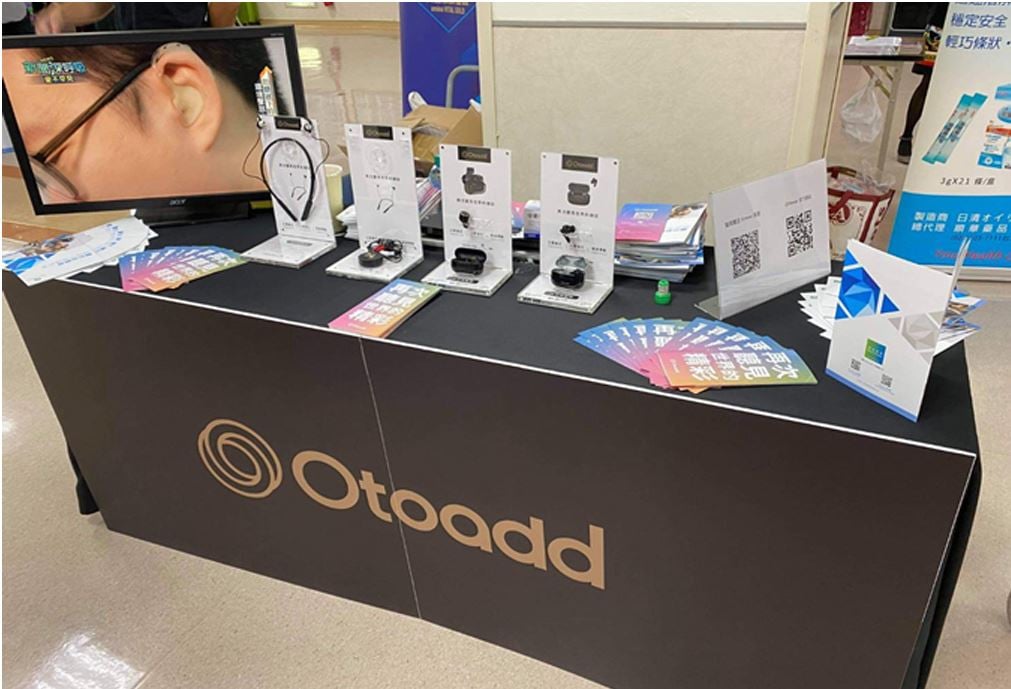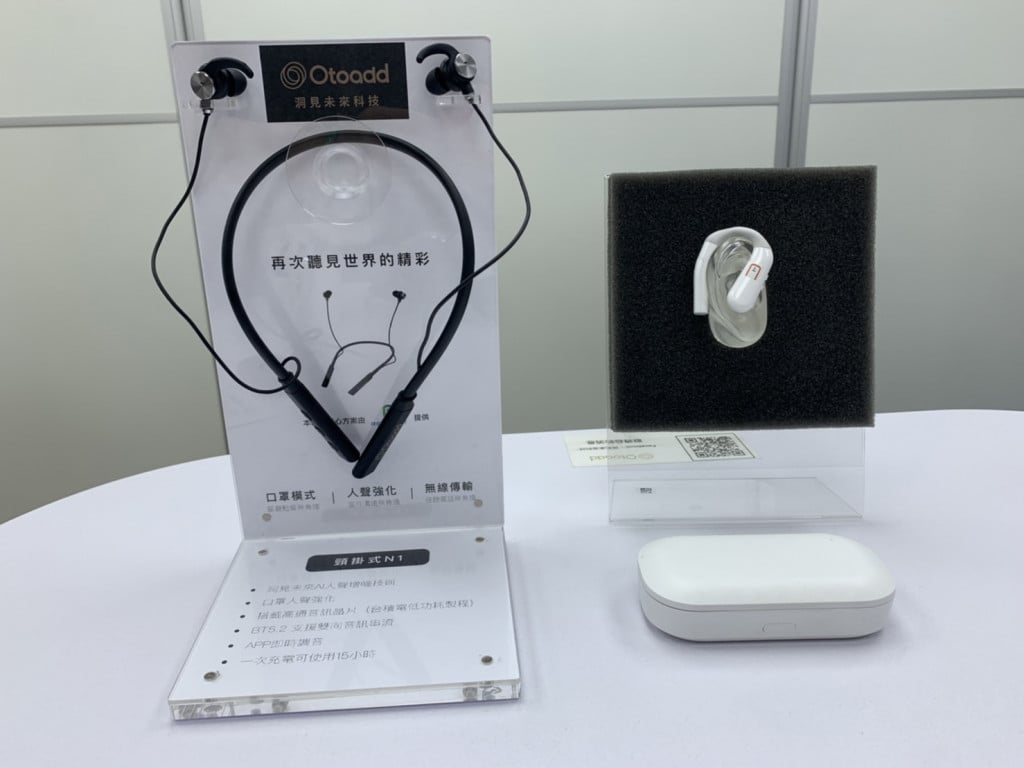【2022 Solutions】 Voice Separation in 7 Milliseconds: RelaJet's Future Technology Makes 'Hearing and Speaking Easier' for the Hearing Impaired
One rainy Thursday afternoon near Taipei Arena, the Taipei Experience Center of RelaJet was fully booked with appointments from people with hearing loss eager to try hearing aids made with a voice separation engine. For the hearing impaired, having affordable, lightweight, and effective noise-reducing hearing aids is truly a blessing.
'We hope to help users in need to hear the world's wonders again!' This empathetic expectation by RelaJet's founder and CEO Po-Ju Chen, who is also hearing impaired, illustrates his understanding of the needs of the hearing impaired. He hopes that RelaJet's unique voice amplification hearing aid technology will benefit many more people.
Affordable hearing aids benefit many with hearing loss
Founded in 2018 by Po-Ju Chen and his brother Yu-Ren Chen, RelaJet developed a multi-voice separation engine paired with Qualcomm's Bluetooth audio platform, drastically reducing the price of imported hearing aids, typically costing 80,000-100,000 NT dollars, to just under 10,000 NT dollars. They aim to develop affordable goods with excellent noise-cancelling capabilities that wirelessly connect to smartphones.
In its first two years, the company primarily developed the multi-voice separation engine, which significantly improved the noise reduction quality. Once equipped with Qualcomm Bluetooth earphone chips, the audio processing time is drastically short, at about 7 milliseconds to enhance main voice projection and reduce ambient noise, less than half the time required by traditional medical standard of 16 milliseconds for hearing aids, nearly 'zero-delay'.

▲洞見未來科技推出平價助/輔聽器,大大嘉惠聽損者
Yu-Ren Chen explains that the primary use of Qualcomm chips for edge computing, along with a streamlined algorithm, achieves extremely low latency and better noise reduction. The hearing aids can cover 18 channels, whereas traditional hearing aids cover 4-48 channels. In the future, RelaJet will progressively increase the number of channels.
According to statistics, there are 470 million people globally with hearing disabilities, with a 30% average device use rate in developed countries, with the highest in Western countries. Taiwan has nearly 1.5 million people with disabling hearing loss, of which the middle-aged and elderly make up 30%, yet the device use rate is only about 10%, which is quite low.
Yu-Ren Chen further analyzes that the low device usage rate is due to two reasons: firstly, the high average selling price of international big brands ranges from 80,000 to 200,000 NT dollars with a three-year usability period, which deters many due to the high cost and maintenance. Secondly, in noisy environments, the noise is also amplified which does not necessarily ensure clarity for the users, and the sound parameters can't be adjusted in real-time, making it inconvenient to frequently visit stores for tuning. Thirdly, most models cannot connect to smartphones, making it inconvenient for the hearing impaired to take phone calls.
Utilizing Qualcomm Bluetooth chips for rapid product development
In light of this, Po-Ju Chen, formerly a semiconductor engineer at MediaTek, leads the technical development, while Yu-Ren Chen, with a legal background, manages the operations. Their seamless collaboration, along with their team employing AI algorithms and chip integration, learns from thousands of hours of audio files in databases through neural networks and deep learning technologies to develop low-latency, high-noise-reduction voice amplification technologies for hearing aids. In 2019, this sound processing technology was integrated into Qualcomm Bluetooth chips, winning first place in the Qualcomm Taiwan Startup Competition and becoming a partner in Qualcomm's Global Expansion Program, significantly boosting product development pace. In 2021, they launched their own Otoadd series of hearing/enhancement products in Taiwan, which received both market favor and positive reviews from many with hearing loss.
Based on different consumer needs, various product designs are available. According to Yu-Ren Chen, the Otoadd wireless earphones with hearing enhancement functions, model N1, are entry-level neckband style priced at 9,500 NT per pair. Users can wear the hearing aid while taking calls, and control noise reduction strength and volume through a mobile app. They plan to develop accessories in the future tailored to the needs of older adults. Besides being available for trials at experience centers in Taipei and Kaohsiung, this hearing aid is also sold through PChome, Taiwan Mobile's myfone, and Elder Age networks, among other channels. Another model intended for individuals with mild to severe hearing loss is the Classic R hearing aid, which received the Japanese Good Design Award in 2021. Since its market debut last year, it has attracted those with congenital hearing loss, with users noting improved clarity in noisy environments and appreciating the convenience of Bluetooth connectivity for calls and watching videos. This product is anticipated to be exported to international markets in the latter half of this year.
Additionally, a hearing aid product combining Bluetooth functionality, set to launch in June this year, is sized like typical Bluetooth earphones, targeting visually conscious consumers with hearing loss. Its small size and attractive wireless earphone design allow for phone calls, and if approved by the Ministry of Health and Welfare, eligible users can apply for government subsidies.
RelaJet to expand into overseas markets, using the USA as a beachhead
An interesting question arises due to the pandemic: everyone must wear masks which impedes lip-reading. How does this affect those with hearing loss? Yu-Ren Chen indicates that this situation highlights RelaJet's advantages. As each person with hearing loss has different levels of hearing ability, hearing aids can only augment to an appropriate volume, assisting users to hear about 60-70% content, with the remainder relying on lip reading and gestures. During the pandemic, as everyone wears masks, masks also muffle sounds, but RelaJet's voice separation engine can correct and strengthen the separation, making it easier for those with hearing loss to recognize voices.
Besides the Taiwan market, RelaJet's next stage will be expanding into overseas markets, expecting to obtain ISO 13485 medical device quality management system certification and US medical device approval in 2022. They plan to enter the US market, either under their own brand or through OEM arrangements.

Apart from the Taiwan market, RelaJet will also enter the US market in the next phase for hearing aids.
「Translated content is generated by ChatGPT and is for reference only. Translation date:2024-05-19」